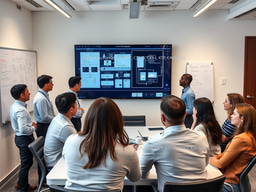Sustainability and energy efficiency while design AV systems

Are You considering sustainability and energy efficiency while design AV systems ?
This is an increasingly important area as the AV industry looks to reduce its environmental impact and adapt to evolving standards and regulations. From a technical standpoint, there are several key factors driving sustainability in AV.
1- Power Consumption: AV equipment like displays, projectors, audio amplifiers, and video servers can be major power consumers. Manufacturers are focusing on developing more energy-efficient components and system designs to reduce electricity usage. Advancements in display technologies like LED and laser-based projection are enabling significant power savings compared to legacy lamp-based projectors. Intelligent power management features, like auto-standby modes and scheduled power cycling, are being integrated into AV equipment.
2- Thermal Management: Effective cooling solutions are critical to minimize energy use and extend the lifespan of AV hardware. Innovations in heat sink design, airflow optimization, and use of passive cooling techniques are improving thermal efficiency. Modular and scalable AV system architectures allow users to power on only the components needed, reducing overall heat generation.
3- Materials and Manufacturing: AV manufacturers are prioritizing the use of recyclable, non-toxic materials in product design and packaging. Efforts are underway to reduce the carbon footprint of AV manufacturing processes through renewable energy use, waste reduction, and circular economy principles.
4- Lifecycle Management: Strategies like refurbishment, component reuse, and responsible e-waste disposal are enabling longer usable lifespans for AV equipment. Modular system designs and standardized interfaces make it easier to upgrade or swap out individual AV components over time.
5- Regulations and Standards: Compliance with energy efficiency standards like ENERGY STAR and regional regulations is driving innovation in sustainable AV technologies. Industry groups are developing voluntary sustainability guidelines and certification programs to promote eco-friendly AV practices.
Overall, the AV industry is making substantial strides to improve energy efficiency and minimize the environmental impact across the product lifecycle. This multifaceted approach is crucial to support the growing demand for greener AV solutions in the years ahead.
As this sector continues to adapt to evolving environmental demands and regulations, it is always advisable to check many resources provided by AVIXA, such as AVIXA Xchange and the AVIXA website. These platforms offer valuable insights and advice on sustainability and energy efficiency in AV industry.
-
Xchange Advocates are recognized AV/IT industry thought leaders and influencers. We invite you to connect with them and follow their activity across the community as they offer valuable insights and expertise while advocating for and building awareness of the AV industry.
Recommended Content
LetsTalkAVbyAlexis Series: Episode 4 : Design Begins With People: Engineering AV Systems Around Real End-User Requirements

LetsTalkAVbyAlexis Series : Episode 2: Network & AV Convergence (AVoIP)





Please sign in or register for FREE
If you are a registered user on AVIXA Xchange, please sign in
At #SAVe we are starting a committee to create sustainable AV designs, your ideas are very good contributions, once we move forward I will share that information with you. Greetings